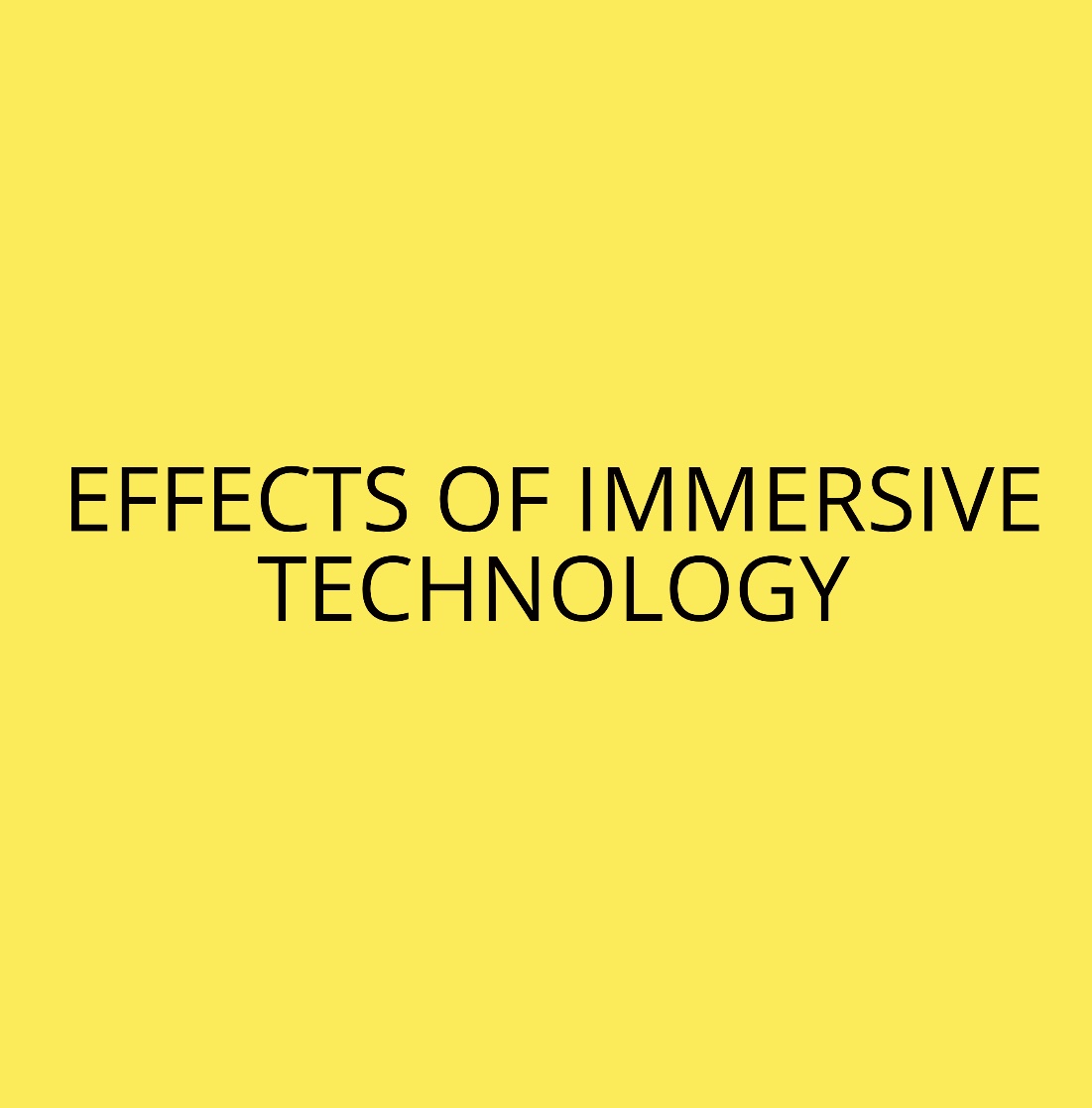Effects of immersive technology;
Immersive technology refers to new ways of creating, displaying and interacting with applications, content and experiences.
It has transformed the digital experience by bringing together the virtual with users sight, sound, and even touch.
Immersive technologies allow a person to feel part of an artificial, simulated environment.
For example, immersive theatre requires the audience to interact with the set, props and actors, while an immersive air control dashboard may allow the operator to see and interact with real-time monitoring data.
Virtual reality
Virtual reality (VR) completely replaces a user’s surroundings with a digital environment using a head-mounted display (HMD) with two near-eye displays, one for each eye. VR lends itself to both industrial applications and creative experiences with new modes of storytelling.
Augmented Reality
Augmented reality (AR) creates an immersive experience for users by blending the real with the virtual. Utilising computer vision and machine learning algorithms the device can understand the ‘real world’ in both a spatial and semantic sense. Digital Catapult has helped cultural institutions reach new audiences with AR and helped retail brands explore new AR-powered solutions to grow, and innovate within, their business.
Haptics
Haptic Technology is commonly known as ‘3D touch’ or ‘kinaesthetic interaction’. Unlike other immersive technologies it involves tactile feedback including pressure, vibrations, and movements. Haptics are likely to be the one of the main ways we interact with applications and content in future computing paradigms – be it spatial computing or the “metaverse”. In 2020 Digital Catapult mapped the UK haptic ecosystem to uncover some of the future use cases, players and opportunities.
In this article you will learn some of the positive effects of immersive technology;
1. It helps to cut down costs:
Immersive technology makes it easier for students all over the world to learn from their various destinations. This helps them to cut cost on transportation, accommodation and other expenses. It also makes it easier for them to have access to learning materials without having to spend a lot of money on buying it.
2. It improves engagements:
With the numerous advancements made through immersive technology. Students now have access to different forms of learning materials and skills.
In addition, students are free to learn any course of their choice.
This will improve their excitement and further encourage them to engage in the learning process. This allows them to be more involved in what they are learning. Such that they can get the best out of their learning experience.
3. It helps to improve students motivation:
There are several ways through which immersive technology can improve and enhance students motivation. Moreover the use of both virtual and augmented reality has made learning more accessible and interesting. This boosts the morale of the students and it enables them to be more eager to learn.
Are you a school owner and you need a web solution to digitize your school work click here to signup for free.




